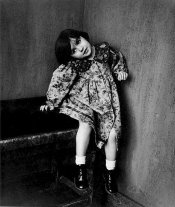m_liddell
Member
- Joined
- Dec 28, 2004
- Messages
- 209
- Format
- Medium Format
My usual combo for street photography is tri-x @ 320 in xtol.
Recently I've had to rate at 1250/1600 due to the heavy overcast skies. For tri-x at this speed I have had good results using diafine (only done a few rolls though), however that has always been in more contrasty conditions and I have heard diafine is not good for flat light at all.
I'd like to minimise grain if I can, I tried pushing tri-x in xtol and the grain was really huge even in 6x7!
What are my options? Is HC110 dil. B worth a try? Will diafine be OK printed on a harder paper grade?
Recently I've had to rate at 1250/1600 due to the heavy overcast skies. For tri-x at this speed I have had good results using diafine (only done a few rolls though), however that has always been in more contrasty conditions and I have heard diafine is not good for flat light at all.
I'd like to minimise grain if I can, I tried pushing tri-x in xtol and the grain was really huge even in 6x7!
What are my options? Is HC110 dil. B worth a try? Will diafine be OK printed on a harder paper grade?











